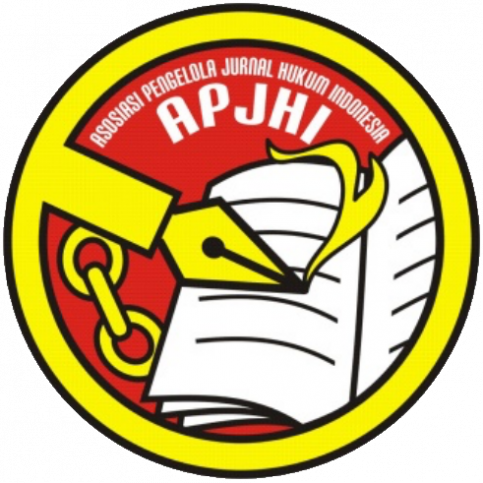CYBERPORN ANALYSIS IN THE PERSPECTIVE OF THE IUS CONSTITUTUM IN INDONESIA
Abstract
Technology and the internet continue to experience extraordinary developments. The progress of the internet has brought a lot of positive progress towards a country. However, the internet can also negatively affect a nation. Many new crimes arise with the development of technology and the internet, one of which is cyberporn crime. In simple terms, cyberporn is also called the sin of pornography by using the internet as a crime tool. Based on the facts that we have found to date, cyberporn crimes continue to increase. This is a result of technological and internet developments that are not used well. The research in this paper uses a normative juridical approach. The research in this paper uses a prescriptive legal approach. The formulation of the problem is how is the regulation of cyberporn crimes a positive law in Indonesia? This research concludes that a constitutional renewal is needed with this cyberporn crime. Because the existing legislation cannot punish the perpetrators of cyberporn crimes. Then, the suggestions in this research include the House of Representatives (DPR) to formulate a law that explicitly regulates the problem of cyberporn crime.
Keywords: crime, cyberporn, ius constititum
Full Text:
PDFReferences
Arief, B. N. (2006). Tindak pidana mayantara: Perkembangan kajian cyber crime di Indonesia. RajaGrafindo Persada.
Bunga, D., & Widiatedja, I. P. (2012). Prostitusi cyber: Diskursus penegakan hukum dalam anatomi kejahatan transnasional. Udayana University Press.
Febriansyah, F. I. (2017). Tindak Pidana Cyberporn Dalam Kajian Yuridis Undang-Undang Pornografi. Perspektif, 22(3), 213–221.
Ismawati, I. (2016). Tinjauan Hukum Islam dan Undang-Undang Pornografi Terhadap Pornografi di Media Sosial [PhD Thesis]. Universitas Islam Negeri Alauddin Makassar.
Jakti, D. K. (2014). Menerawang Indonesia: Pada Dasawarsa Ketiga Abad Ke-21. Pustaka Alvabet.
Jogiyanto, H. M. (1999). Pengenalan Komputer. Andi Offset, Yogyakarta.
Kaku, M. (2012). Physics of the future: How science will shape human destiny and our daily lives by the year 2100. Anchor.
Oliver, K., Lorenc, T., & Innvær, S. (2014). New directions in evidence-based policy research: A critical analysis of the literature. Health Research Policy and Systems, 12(1), 34.
Owen, G. T. (2014). Qualitative methods in higher education policy analysis: Using interviews and document analysis. The Qualitative Report, 19(26), 1.
Punch, K. F. (2013). Introduction to social research: Quantitative and qualitative approaches. sage.
Raharjo, A. (2002). Cybercrime: Pemahaman dan upaya pencegahan kejahatan berteknologi. Citra Aditya Bakti.
Samadikun, S. (2000). Pengaruh Perpaduan Teknologi Komputer, Telekomunikasi dan Informasi. Kompas.
Tapscott, D., & Tapscott, A. (2016). Blockchain revolution: How the technology behind bitcoin is changing money, business, and the world. Penguin.
Van Reenen, J. (2011). Wage inequality, technology and trade: 21st century evidence. Labour Economics, 18(6), 730–741.
DOI: http://dx.doi.org/10.31000/jhr.v8i1.3018
Article Metrics
Abstract - 1264 PDF - 1011Refbacks
- There are currently no refbacks.

This work is licensed under a Creative Commons Attribution-ShareAlike 4.0 International License.

